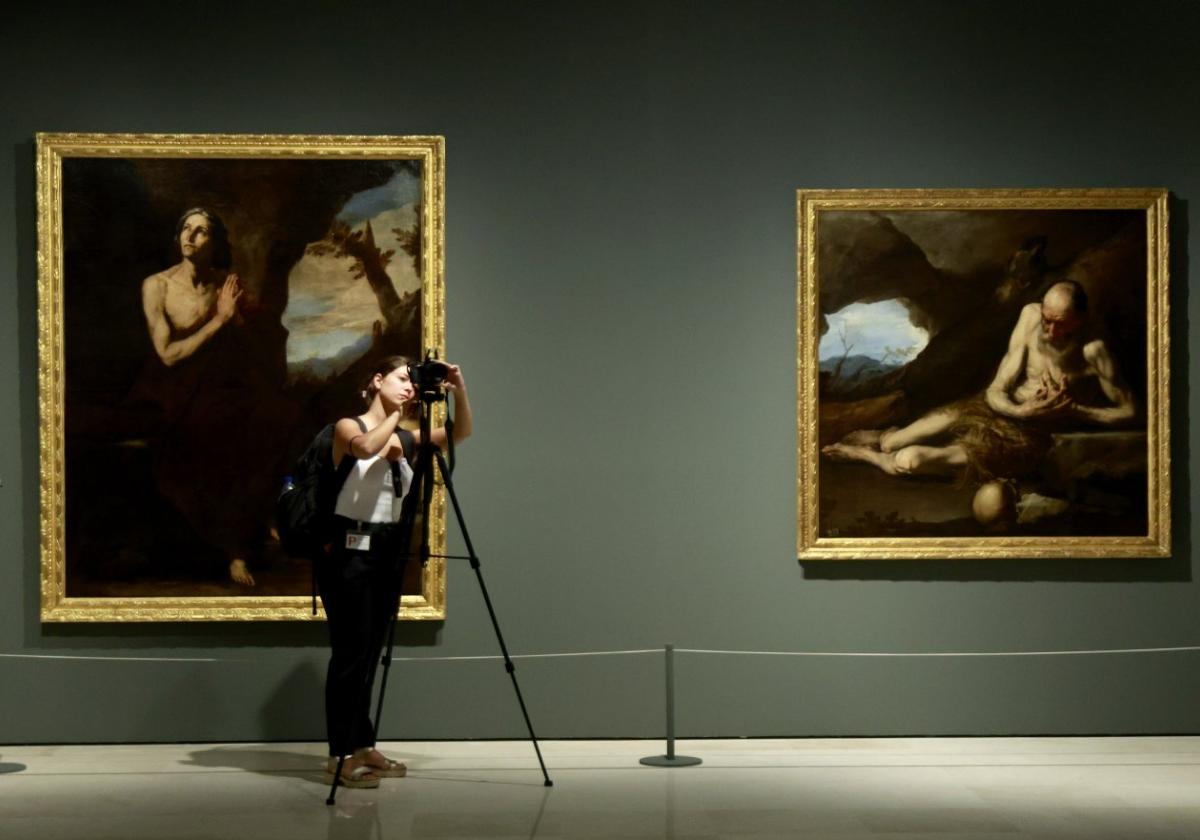

Sections
Highlight

Regina Sotorrío
Malaga
Friday, 6 October 2023, 18:22
What is being demonstrated here, director Lourdes Moreno explains, is the story of "a great seduction". It is the story of how a Church in decline, weakened as never before by the Protestant Reformation, rearmed itself to connect with the faithful. And it found in art the most effective way to do so, with the complicity of masters like Velázquez, Ribera, Mena, Murillo, Luca Giordano, Alonso Cano, Martínez Montañés... All of them share a room in one of the most ambitious exhibitions to date at the Carmen Thyssen Museum in Malaga. A powerful collection of Baroque works in which saints, nuns, hermits,and friars are portrayed in a fiercely realistic manner, "fiercely human", in the words of the poet Blas de Otero.
The exhibition, Fieramente Humanos. Retratos de Santidad Barroca (Fiercely Human, Portraits of Baroque Holiness) is running until 18 February and gives a new perspective on one of the most brilliant periods of Spanish art through 35 paintings and sculptures from institutions such as the Museum of Fine Arts in Valencia (the main collaborator and lender), the Prado Museum, the Fine Arts of Seville and Malaga Cathedral, among others.
In the 17th century, art became "propaganda for faith," points out Lourdes Moreno, director of the Carmen Thyssen Museum. In response to accusations of idolatry from Protestantism, the Council of Trent reacted by decreeing that the Church should be "iconic and performative". "Catholicism of the 16th and 17th centuries is a true celebration based on the visual, sensory, and performative," she continues. "The relationship is produced by images of immense beauty, rituals that fill the calendar of any Mediterranean region, and a way of coexisting with religion that moves away from the rational and philosophical and brings it closer to the emotional." The Baroque style accentuates all of these aspects.
The ultimate expression of this type of naturalistic painting can be seen in the portraits of religious figures who died in a state of sanctity, such as the masterful portrayal of Simón de Rojas on his deathbed by Diego Velázquez, or the anonymous painting El Hermano Lucas Texero Ante el Cadáver de Bernardino de Obregón (Brother Lucas Texero Before the Corpse of Bernardino de Obregón), which is on loan from the Prado Museum.
The Church realised that painting so realistically "awakens stronger emotions in the observer" than any other form of expression. And nothing shakes the believer more than the martyrdom of Jesus Christ. Pablo González, director of the Museum of Fine Arts in Valencia and curator of the exhibition, draws attention to the sculptural ensemble by Pedro Mena: an Ecce Homo covered in blood and wounds, with a sorrowful Virgin Mary by his side. It is not only about being aware of Christ's pain, but also the tear-streaked face of Mary serves as an example "of how to react to the image of the suffering one".
This method is then applied to the representation of saints. Paintings like Crucifixion of Saint Peter by Luigi Amidani, with the gestures of pain of those around his upside-down cross, and especially The Embrace of Saint Francis of Assisi with the Crucified, where Francisco Ribalta expresses the profound virtue of the saint in a painting showing Christ being removed from the cross.
At that time, Spain was under the reign of the Habsburgs, a fervently Catholic dynasty that based the monarchy's wealth on the number of saints it had. Up to 15 saints were canonised in the 17th century. The Baroque portrays them as suffering, in some cases in the midst of martyrdom, inviting the viewer to accompany them in that pain. There are Saint Paul the Hermit and Saint Mary of Egypt by Ribera. "They don't look at us; they direct their gaze out of the painting because they see the divinity they want to imitate," explains the curator.
Saint Bartholomew (by Luca Giordano), Penitent Saint Jerome (by Francisco de Herrera El Viejo), Saint Onuphrius (by José de Ribera), Saint Sebastian (by Francisco Ribalta), Saint Francis of Borgia (by Alonso Cano), and Saint Peter (by Murillo) are portrayed here as ordinary humans afflicted by various life circumstances. In fact, as Moreno recalls, the artists drew inspiration from "common, humble, and relatable people".
The exhibition is rounded out by three contrasting pieces that break with the chronological order but maintain the narrative. Three paintings from the 20th century demonstrate the enduring nature of the representational style that originated 450 years ago. Alongside Ribera's Saint Teresa of Jesus, the Thyssen contrasts it with El Patio de las Tentaciones (The Courtyard of Temptations) by Equipo Crónica, with all its ironic and critical weight, yet sharing a similar composition and objective (to make an impact). The surreal interpretation of the Crucifixion by Antonio Saura confronts the realistic Christ on the Cross by Pereda, but both share the same basic rules. On an adjacent wall, the gaze of the Mystic painted by Darío Villalba in the 1970s is unsettling. Four centuries separate these works, but the same emotion persists.
Noticia Patrocinada
Publicidad
Cristina Cándido y Álex Sánchez
Lucía Palacios | Madrid
Esta funcionalidad es exclusiva para registrados.
Reporta un error en esta noticia

Debido a un error no hemos podido dar de alta tu suscripción.
Por favor, ponte en contacto con Atención al Cliente.

¡Bienvenido a SURINENGLISH!

Tu suscripción con Google se ha realizado correctamente, pero ya tenías otra suscripción activa en SURINENGLISH.
Déjanos tus datos y nos pondremos en contacto contigo para analizar tu caso

¡Tu suscripción con Google se ha realizado correctamente!
La compra se ha asociado al siguiente email
Comentar es una ventaja exclusiva para registrados
¿Ya eres registrado?
Inicia sesiónNecesitas ser suscriptor para poder votar.